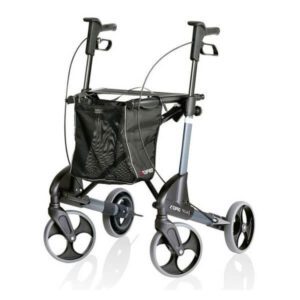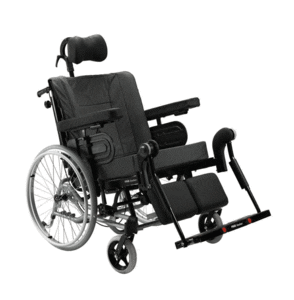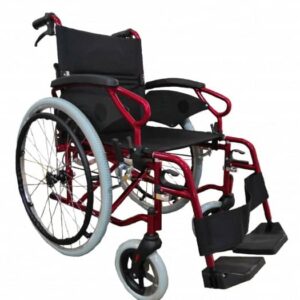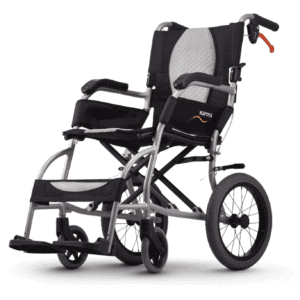Choosing the Right Mobility Aid: A Guide to Wheelchairs, Rollators, and Walkers
When it comes to selecting the right mobility aid, there are various options available to cater to different needs and preferences. Wheelchairs, rollators, and walkers are among the most common mobility aids that provide assistance and support to individuals with mobility challenges. In this comprehensive guide, we will explore the features, benefits, and considerations for each type of mobility aid. Whether you are searching for a mobility aid for yourself or a loved one, this article will help you make an informed decision. Let’s delve into the world of wheelchairs, rollators, and walkers and find the perfect mobility aid to enhance your freedom and independence.
I. Wheelchairs: A. Manual Wheelchairs:
- Features and Benefits:
- Discuss the construction, frame materials, and durability of manual wheelchairs.
- Highlight the benefits of manual wheelchairs, such as self-propulsion, maneuverability, and customization options.
- Types of Manual Wheelchairs:
- Explore different types, including standard wheelchairs, lightweight wheelchairs, and sports wheelchairs.
- Explain the features and specific use cases for each type.
- Factors to Consider When Choosing a Manual Wheelchair:
- Discuss factors like weight capacity, seat size, wheel size, and adjustability.
- Provide guidance on selecting the right manual wheelchair based on user needs and lifestyle.
B. Electric Wheelchairs:
- Features and Benefits:
- Describe the advantages of electric wheelchairs, such as powered mobility, ease of use, and enhanced independence.
- Highlight additional features like power seating options and advanced controls.
- Types of Electric Wheelchairs:
- Discuss different types, including rear-wheel drive, front-wheel drive, and mid-wheel drive.
- Explain the characteristics, stability, and maneuverability of each type.
- Factors to Consider When Choosing an Electric Wheelchair:
- Discuss considerations like battery range, weight capacity, terrain compatibility, and customizable features.
- Provide tips on selecting the right electric wheelchair based on individual needs and preferences.
II. Rollators: A. Features and Benefits:
- Describe the design, construction, and components of rollators.
- Highlight the benefits of rollators, such as improved stability, walking assistance, and integrated seating. B. Types of Rollators:
- Discuss various types, including three-wheeled rollators, four-wheeled rollators, and rollators with advanced features.
- Explain the differences in maneuverability, storage, and stability between each type. C. Factors to Consider When Choosing a Rollator:
- Discuss considerations such as handlebar height adjustability, weight capacity, wheel size, and braking system.
- Provide guidance on selecting the right rollator based on mobility needs, lifestyle, and terrain.
III. Walkers: A. Features and Benefits:
- Describe the design, construction, and functionality of walkers.
- Highlight the benefits of walkers, such as stability, support, and versatility in various environments. B. Types of Walkers:
- Discuss different types, including standard walkers, wheeled walkers, and rollators that can be used as walkers.
- Explain the characteristics, maneuverability, and usability of each type. C. Factors to Consider When Choosing a Walker:
- Discuss considerations like height adjustability
, weight capacity, folding capability, and accessories compatibility.2. Provide tips on selecting the right walker based on individual needs, stability requirements, and intended usage.IV. Making an Informed Decision:A. Assessing Individual Needs:1. Emphasize the importance of evaluating personal mobility requirements and limitations.2. Encourage consulting with healthcare professionals or occupational therapists for guidance.B. Trying Before Buying:1. Suggest visiting a reputable medical equipment provider, like Coastcare Medical Equipment and Hire, to try out different mobility aids.2. Highlight the benefits of test-driving wheelchairs, rollators, and walkers to assess comfort, fit, and usability.C. Considering Lifestyle and Environment:1. Discuss how lifestyle factors, such as indoor versus outdoor usage or travel requirements, can impact the choice of mobility aid.2. Highlight the importance of considering factors like maneuverability, portability, and storage when selecting a mobility aid.D. Maintenance and Support:1. Provide information on maintenance requirements and servicing options for wheelchairs, rollators, and walkers.2. Mention the availability of support services from reputable providers like Coastcare Medical Equipment and Hire.Choosing the right mobility aid is a crucial step towards enhancing independence and quality of life for individuals with mobility challenges. By understanding the features, benefits, and considerations of wheelchairs, rollators, and walkers, individuals can make informed decisions that align with their unique needs and preferences. Remember to consult healthcare professionals and try out different options before making a final choice. Whether it’s a manual wheelchair, electric wheelchair, rollator, or walker, the perfect mobility aid awaits to provide you or your loved one with the freedom and support needed to navigate the world with confidence.











